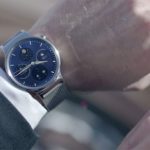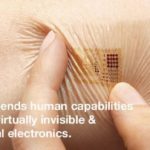The best technology is not seen: this is the future that awaits us
Technology has become smaller and, by extension, less visible to the human eye. This is not merely a reduction in size, this transformation is accompanied by simplifying use, making things easier for the user and camouflaging everything from when the action takes place until the reaction comes. A promising future, but one in which you have to look closely to understand all the implications.

Technology evolves and surprises us every so often with great advances. These major developments are often new functionality but sometimes we forget something very important: the transformation of its designs and how we use and interact with it..
The next big change looks to be technology becoming invisible. It will be with us, around us, but we will not realize it. A great challenge for engineers and developers, a nice outlook for the coming years, although with a number of nuances.
A very bright and automatic future
Think for a moment about the size of a hard drive a few decades ago. It was the size of a room and its capacity was tiny compared to a USB memory stick today. Technology has become smaller and the best example of this transformation nowadays lies in devices such as phones that we use today, which are miniature computers. Not only that, we now have complete chips the size of a button.
This size reduction has been accompanied by a simplification in the use of proprietary technology. It is increasingly easy to use and tasks have been reduced to gestures and actions that anyone can do. Let's consider how the computer interface has evolved, those black screens that are now touchscreen windows where everything is done easily.
Making a backup to transfer it to another device took time. Now, if we want to transfer information from one cell phone to another we just have to physically bring them next to each other to begin to transfer files from one place to another. Everything is becoming easier, it is becoming invisible.
Wireless connectivity makes communication less visible, but not more transparent; the technical part vanishes so we can focus on the experience.. This trend continues to grow, and you just have to look at the categories that have emerged and are developing so that chips are not seen, to make using them more natural.
Wearable technology shaped as bracelets which do not appear to be watches with processors that could well be on the inside of a phone, those that seem mere aesthetic adornments but actually don't stop counting steps and calories burned throughout the day.
Becoming less technological means that design takes first place, and by extension, we have to combine it with everyday objects. Yves Béhar, has this clear: the future of devices that want to become invisible, like wearables, have to be camouflaged by everyday objects. We shouldn’t forget that they are there as another electronic device.
This trend not only means a change in the market, but also a new business opportunity. According to Jupiter, from now to 2020, the wearables related market will be worth 80.000 million dollars. For them to work, the key is that their presence is discrete.
If we want something more present, Gartner wrote a paper where he claimed that in 2017, one third of the wearable technology will be invisible. People won’t know we are wearing it. Here we find a specific industry, glasses fabricants. But they won’t be alone.

Smart watch
The Internet of things is also following this trend, to not seeing the technology, to wanting everything connected but for it not to be seen. Beacons that will know when we are close and will send us information in real time. Checking the status of our house from our cell phone with the push of a button and not having to do anything else.
Mobile payments, which are upcoming , have set a target that transactions are as secure and comfortable as possible for us. A future that looks bright and ideal as has sometimes been portrayed in movies, but where there is also a lot of buts and problems that we have still been unable to solve.
Technology in the skin to cover small targets
Now that we have set the scene, is time to talk about what we will see in the next months. Clothes will be the protagonists, and we will se a wide variety. From shoes that adjust accordingly to how we walk, to patches to do sport and quantify when we move. We will just have to put them on us and let them work, till they announce us that they are running out of battery.

Chip MC10
This group, is one of the most interesting projects at MC10, a Massachusetts based company in charge of creating small computers that stick to our skin, and work autonomously and independently. We will wear technology. Now is still in a development status, but soon we will see many applications.
Making it visible, means opening the market to all kinds of technology. Thanks to miniaturization, we can put this technology in many places so that they attend specific needs. From jewellery with notification systems to sprinklers controlled from our smartphone, for those gardening lovers.
All that glitters is not gold
The idea of making technology invisible sounds ideal but it has a number of drawbacks that are not always taken into account. Camouflaging it and hiding it from our eyes makes everything more automated and, by extension, we lose control of what we're doing.
We know what's happening, we start the action waiting for a reaction but the intermediate process is unknown to us. If it fails, we do not know why that is, we cannot fix it, there is no way to intervene to sort it or at least know how to fix it.

Nest Termostato
It's obvious that this development will make life easier but we will also lose control of certain objects; we won't know how they'll work, and by extension, we'll be unaware of what's happening and important issues will arise from this situation such as privacy or the information being shared..
This simplification will make us more alert, we will look more at the details and be aware of what is happening. Some trends, such as the Internet of things, have already shown that despite their great promise, they have security issues. According to a HP study, 70% of devices related with internet of things can be hacked.
It's important to follow everything related to innovation and major advances in technology, but also, question their usefulness, whether everything that is coming out is as good and promising as their creators want us to believe. Becoming invisible, but being more aware than ever of what we can do, and what the consequences are.